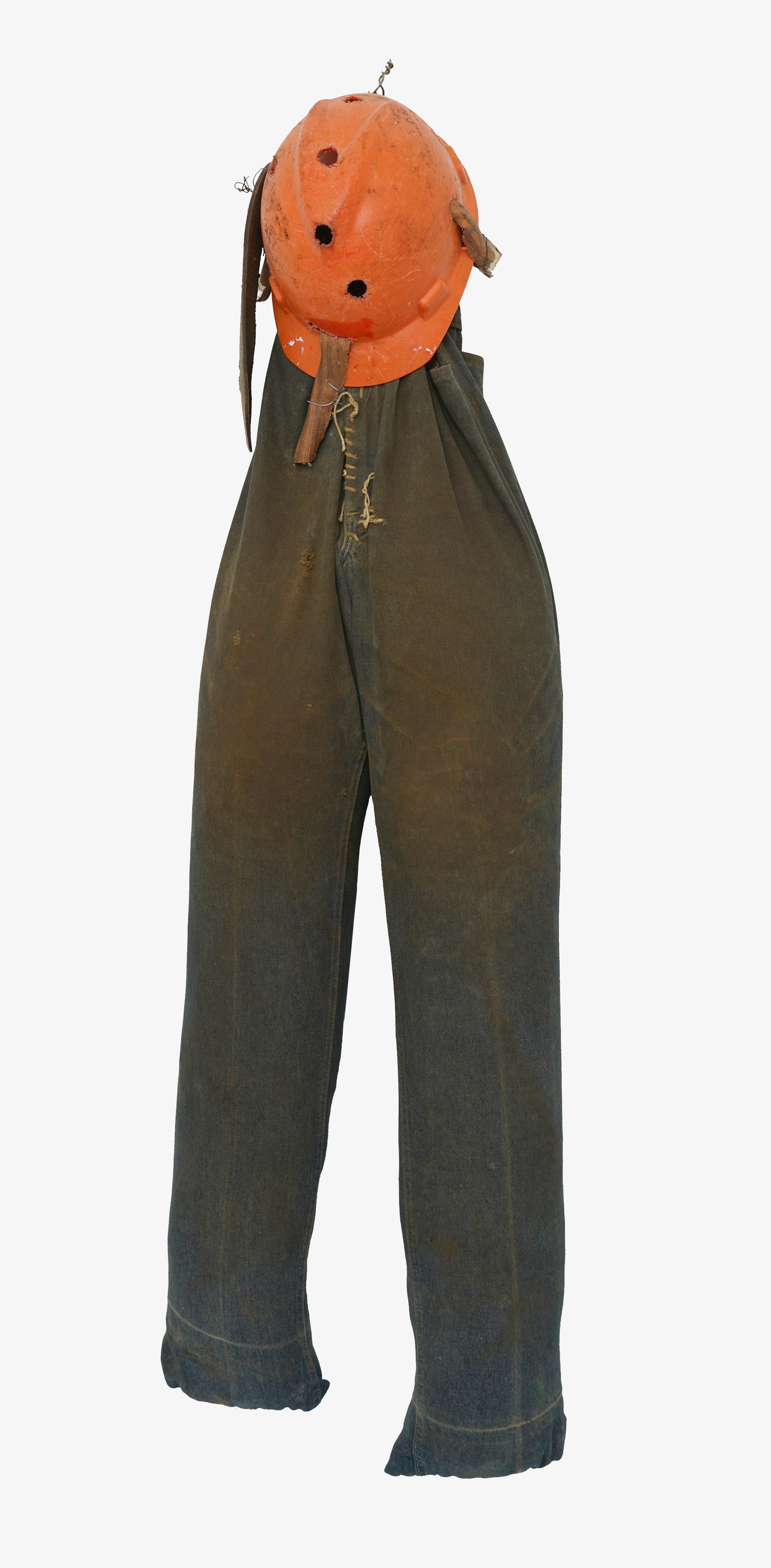Hawkins Bolden
Scarecrows
April 9 - May 15, 2021
179 E Broadway, New York, NY 10002
When asked, “Is this art?”, as he was boring a hole, or “eye”, into an old metal can with an ice pick on the floor of his bedroom, Hawkins Bolden’s perplexed response was, “Art? What do ya mean? This, here, this is to scare the birds away.”
Hawkins Bolden (1914-2005) was born in the Bailey’s Bottom section of Memphis, TN, to parents of African American, Creole and Native American descent. Around the age of 7, he was seriously injured while playing baseball when his twin brother swung for and missed an errant pitch that Bolden, who was catcher, stood up to catch. The injury led to multiple seizures, one of which landed him on his back and left him staring into the sun while playing alone in the front yard. The episode left him permanently blinded and dashed his hopes of becoming a famous ball player.
Later in life, a niece observed Bolden growing vegetables and tending a small garden in the backyard of the family home. She made the offhand suggestion that a scarecrow would help keep birds and other pests from eating his seed and destroying his plants. Her goodwill-advice unexpectedly triggered an obsession that would consume the rest of Hawkins Bolden’s life. The elaborate constructions he began creating around 1965 were designed strictly for the purpose of protecting his tomato plants, hot peppers and collard greens, along with other Southern staples, but the ingenuity employed transforming found objects into powerful talismans, totems and mask-like faces strikes at the core of artistic invention and creativity.
Over the course of many decades and growing seasons, Hawkins Bolden assembled scarecrows using altered frying pans, discarded toys, metal pots and pans, scraps of wood, garden hose, wire, worn-out shoes and anything else he could find in the alleyways near his home. A dense outdoor environment evolved that housed assemblages displaying a deep consistency and an innate sense for the inner power of an object. In Bolden’s hands, a garden hose is no longer that, it is now a tongue, or an ear, for one of his garden protectors. His figurative scarecrows are unquestionably singular examples of American art brut, and they also resonate within contemporary art trends, without the artist having awareness of, or intention towards, either designation.
Hawkins Bolden’s scarecrows are included in the collections of The Smithsonian Museum of Art, The High Museum, the de Young Museum and the Philadelphia Museum of Art.










